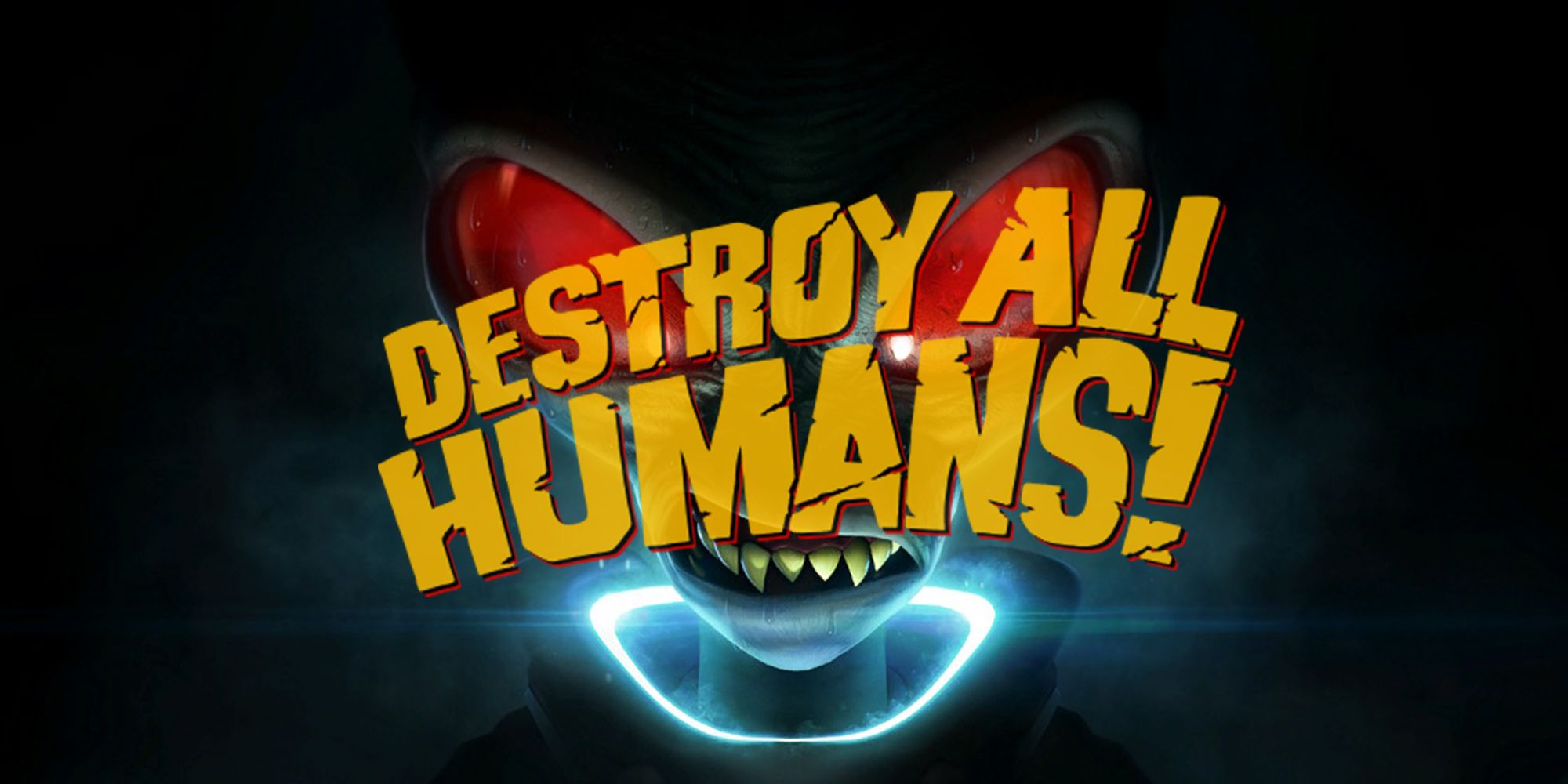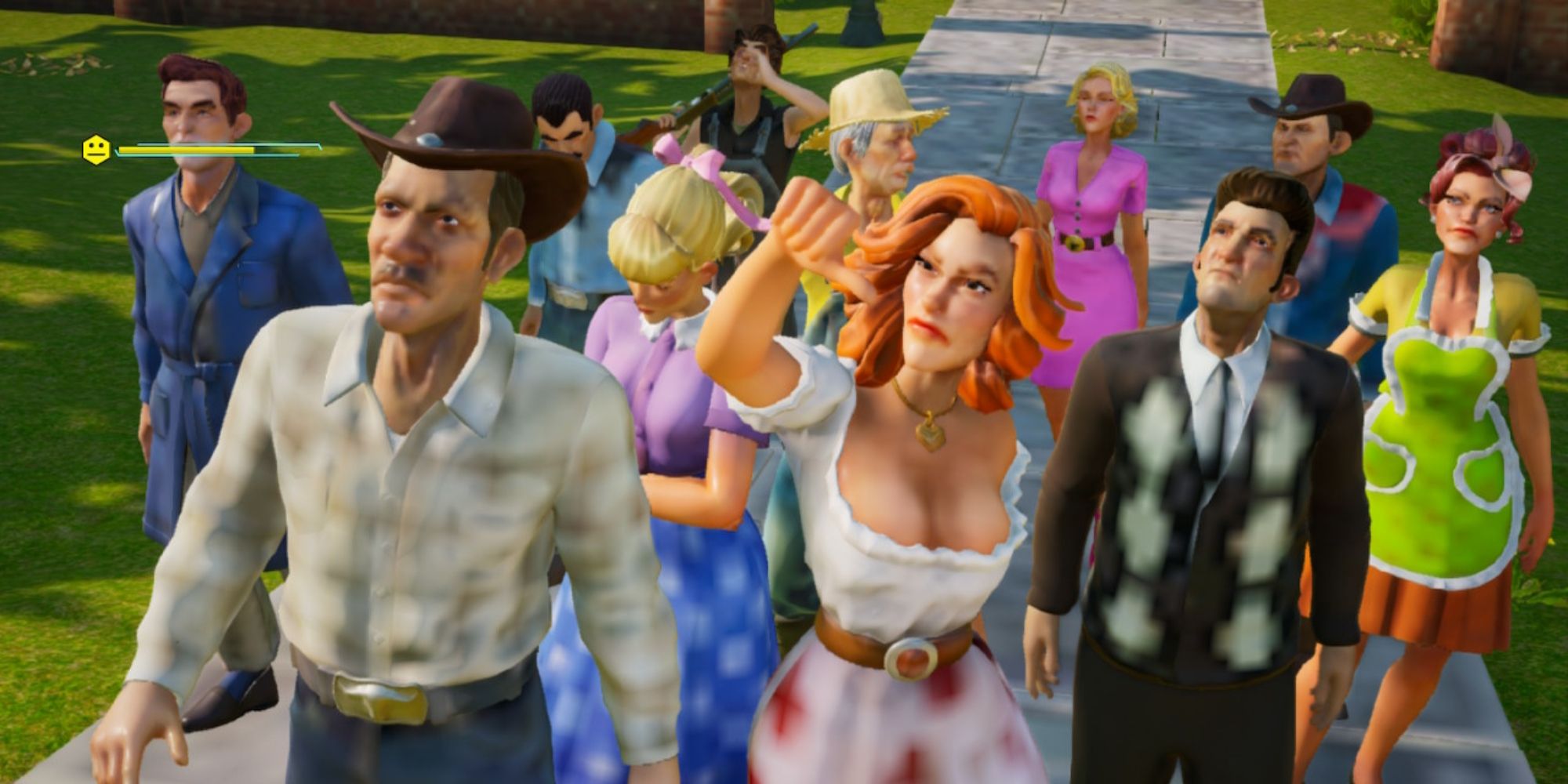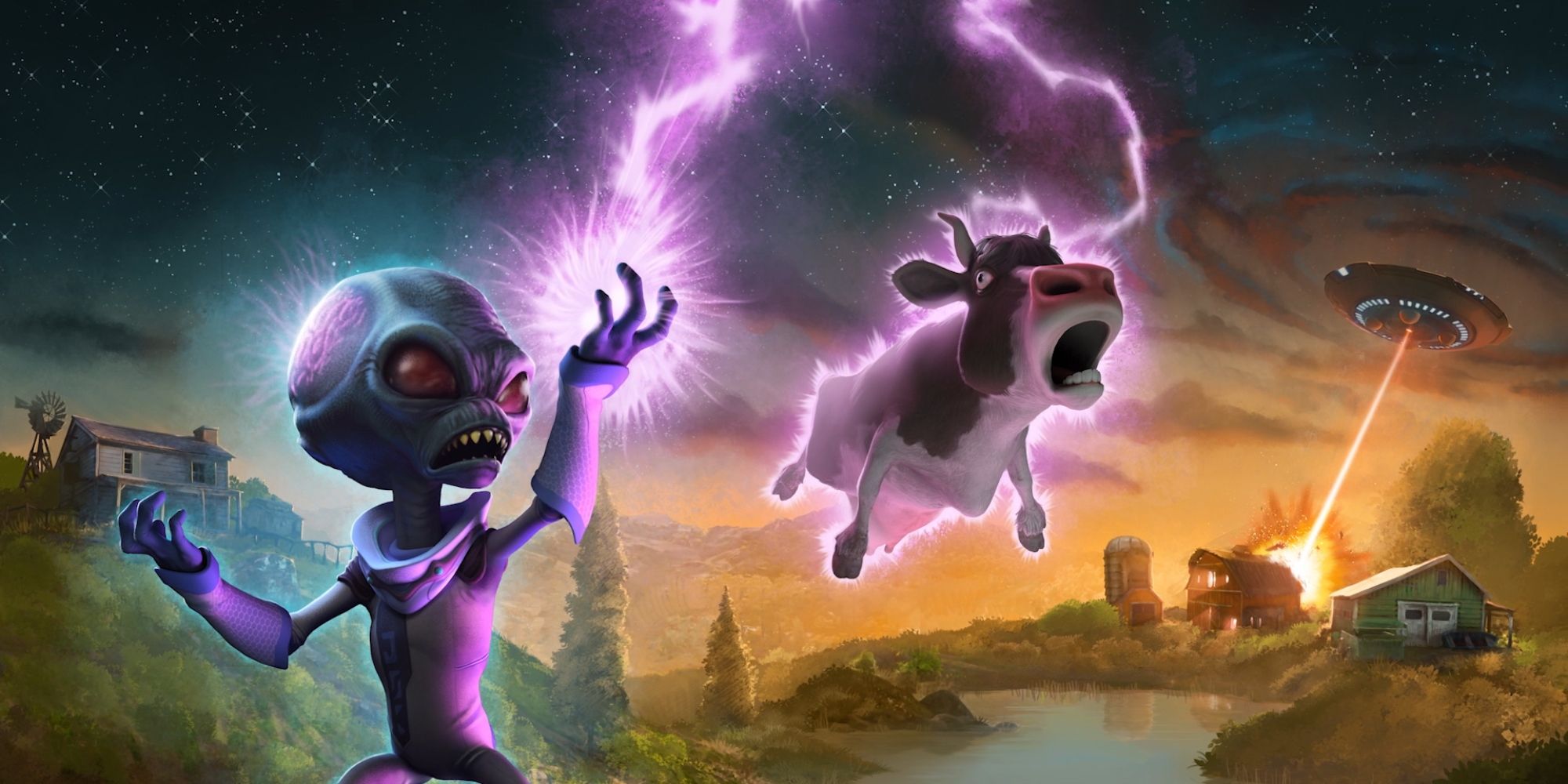In the 16 years since the release of Destroy All Humans!, the world of gaming has changed immensely. Now, players are more likely to find themselves in large open worlds with intricate mechanics and more serious stories, making the Destroy All Humans! remake a strange trip back to a bygone era of gaming. This era of games is gone for a reason, and this remake only highlights how dated this title is - but that doesn't mean it isn't fun.
The Destroy All Humans! remake originally released in 2020 for PlayStation 4, Xbox One, PC, and Stadia to mixed reviews. While there has been plenty of discussion about the remake's short comings, the Nintendo Switch port only exacerbates the known issues and presents some new ones. For example, there are reoccurring graphical issues that should have been resolved in the port's extra year of development.
The opening cinematics look gorgeous thanks to high-res rendering, which showcases just how drastically game development has changed since 2005; however, that level of graphical fidelity was inconsistent at best. By the third mission, in which Crypto takes on the appearance of the town mayor to speak to the public, the crowd looked like they were molded out of smooth clay. It's less noticeable during gameplay, but sticks out like a sore thumb during cutscenes and could have been avoided had the entire game been ported at a lower, more consistent resolution.
Destroy All Humans!'s controls put its age on display thanks to a simultaneously jagged and floaty camera. Trying to aim and navigate each level feels strange having now become accustomed to near pixel perfect camera operation and improved weapon aiming systems. Thankfully, the auto-lock aiming system that littered the 2000s helps to keep aiming Crypto's weapons from feeling like a chore once the player adjusts, but the same can't be said for the flying saucer sections, which truly show their age.
Even with the camera and graphical issues, the gameplay is still a load of fun. While the level structure is dated, it still holds up in a nostalgic way that brings to mind a slew of other silly destruction games like The Simpsons: Hit & Run or The Incredible Hulk: Ultimate Destruction. Each level provides a small open world for Crypto to navigate and generally utilizes the same loop of stealth, cutscene/narrative progression, and destruction. While the formula isn't anything groundbreaking and the stealth feels a bit redundant, the over-the-top destruction is incredibly fun, satisfying, and whacky.
The tone of Destroy All Humans! is where it truly shines. As expected of a 16 year-old game, there are a good amount of jokes that haven't aged well but none of them really verged on being tone-deaf or offensive - in fact, most of the game's humor is genuinely entertaining. The alien overlord Orthopox is arguably the most entertaining due to equal parts writing and voice acting, having been performed by the voice of Invader Zim himself, Richard Horvitz. Crypto, on the other hand, is very subjective. His delivery is very staggered and Jack Nicholson-esque, so it's hit or miss depending on how a player feels about that style of performance.
Destroy All Humans! is beat for beat a remake of the original title with the exception of one new mission that manages to blend right in with the rest of the game. The biggest concern with this port is that it crashed a number of times and there never seemed to be a consistent reason for why - hopefully this is something that will be addressed in early updates. While it's awesome to see Switch players get access to this cult classic and all its new content, it would be better to purchase the port on another console if possible, as doing so will likely provide a more consistent and enjoyable experience.
Destroy All Humans! releases June 29th for the Nintendo Switch and is currently available for PS4, Xbox One, PC, and Stadia. A Nintendo Switch code was provided to Screen Rant for the purposes of this review.



